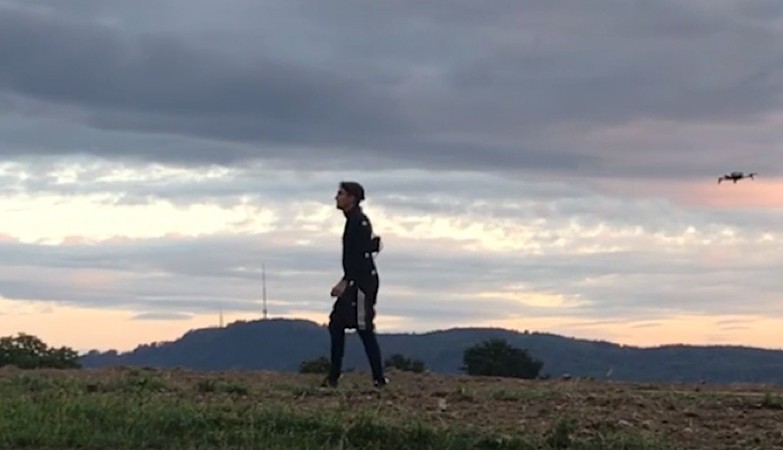Using drones to make 3D animations
on

Drones are going to transform the film industry in a major way. Researchers at the ETH Zurich and the TU Delft showed a year ago that spectacular, technically very complex film scenes can be realised much easier by employing these mini aircraft. In a follow-up project, which was presented in December 2018 at the SIGGRAPH conference in Tokyo, they demonstrated that drones also have a great potential in animated films.
Drones replace dozens of cameras
It is very time-consuming to make figures appear realistic in an animated film. For a realistic appearance of a figure, an actor who performs the movements has to be filmed first. Subsequently, the animated figure is built around this.
In order to reconstruct the movements of the actor in a 3D animation, these movements have to be recorded using at least two cameras simultaneously. In particular, scenes with motion in a large space create a huge amount of technical effort; two carefully placed cameras have to be able to cover the entire scene. That means either many cameras are installed in different places, of which only a couple are useful at a time, or other difficult constructions have to be used.
Superseded technology
This complicated technique may soon be superseded. Researchers at the ETH Zurich and the TU Delft have developed a system, which is named Flycon, that in its simplest form comprises just a laptop and two drones that are readily commercially available.
The drones follow the motion of the actor and adjust their positions automatically, such that the actor is always filmed from two different angles. This reduces the amount of camera work, because there are only cameras where they are actually needed. In impressive feature of this system is that it can anticipate the motion of the actor in real time and calculate where the drones have to be, to keep the actor in the frame.
Markers
To minimise the amount of data that is generated, markers are attached to the joints of the actor, in the form of infrared diodes. The drones are fitted with a daylight filter and only register the light from the markers, which greatly simplifies the data processing. The system sees only a few points, from which it subsequently determines body position and direction of motion.
Sports motion analysis
The system can also register sudden and fast movements reliably. That makes this technique also interesting for the analysis of sports motion. Until now it was, for example, impossible to do a complete motion analysis of runners, because this is much too complex. However, with this new system it is very easy to examine how the motion pattern of a runner changes over a period of time.
The complete article in PDF format can be downloaded here.
Source: TU Delft


Discussion (0 comments)